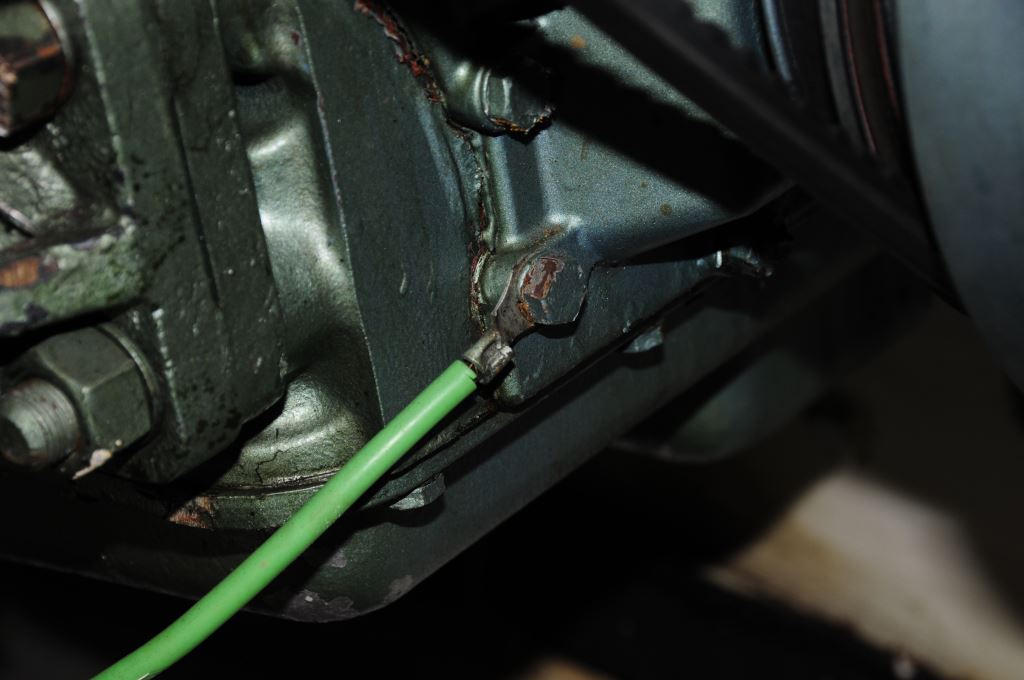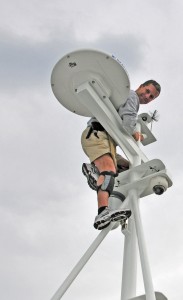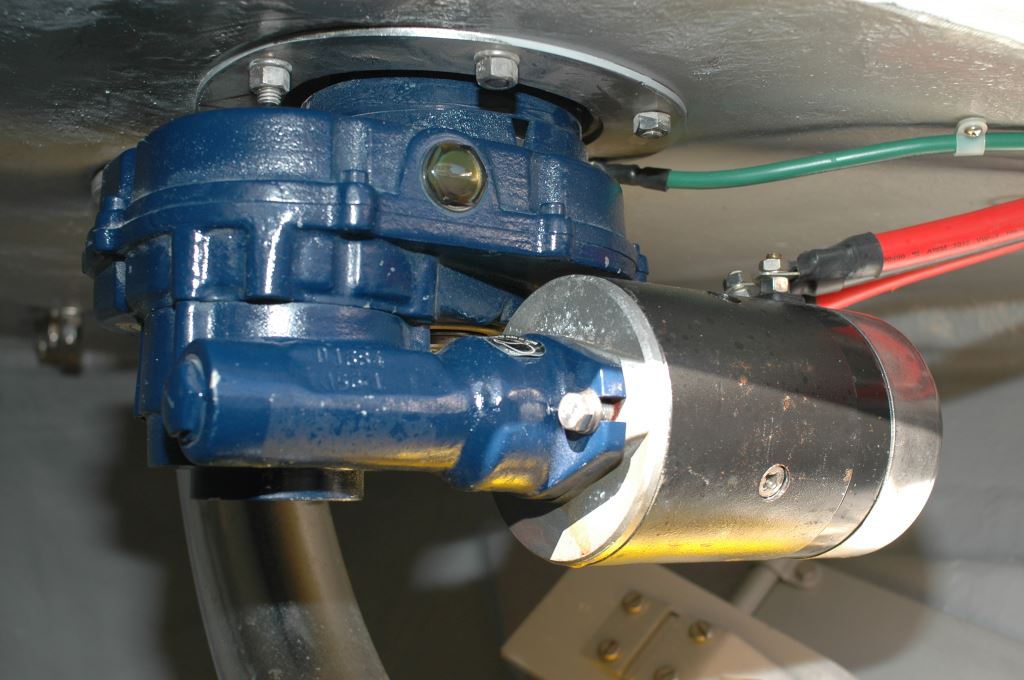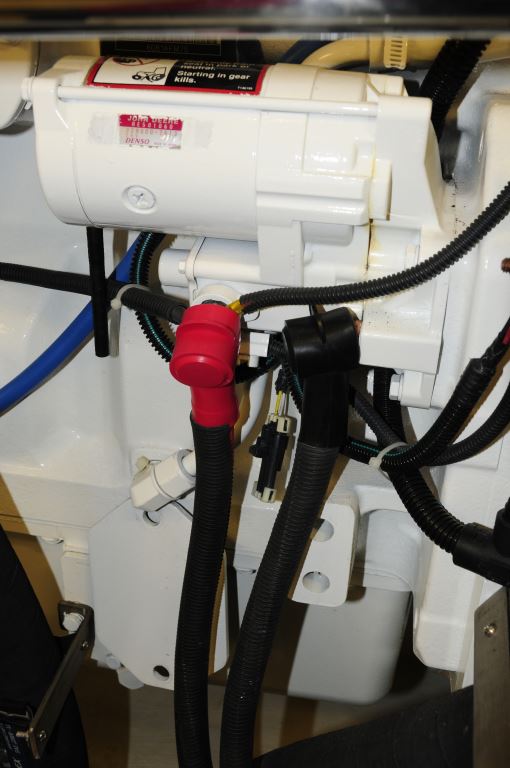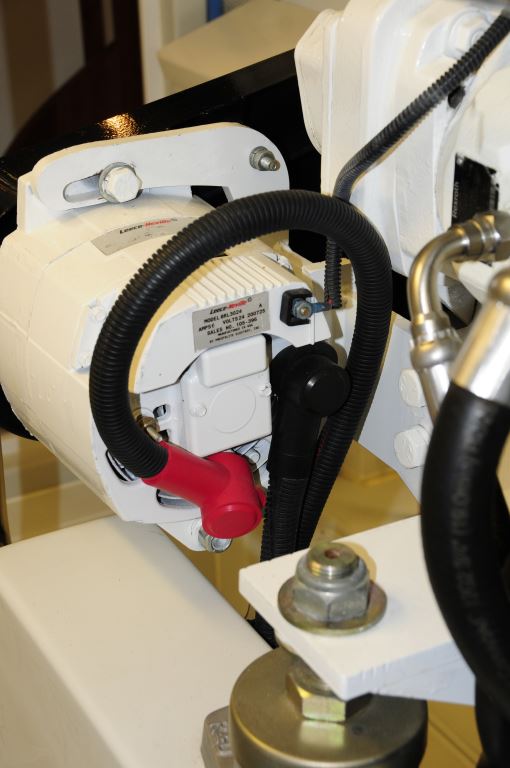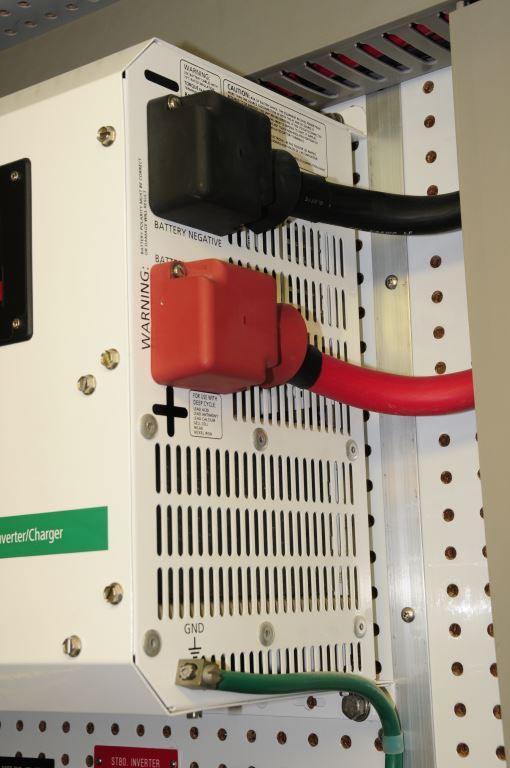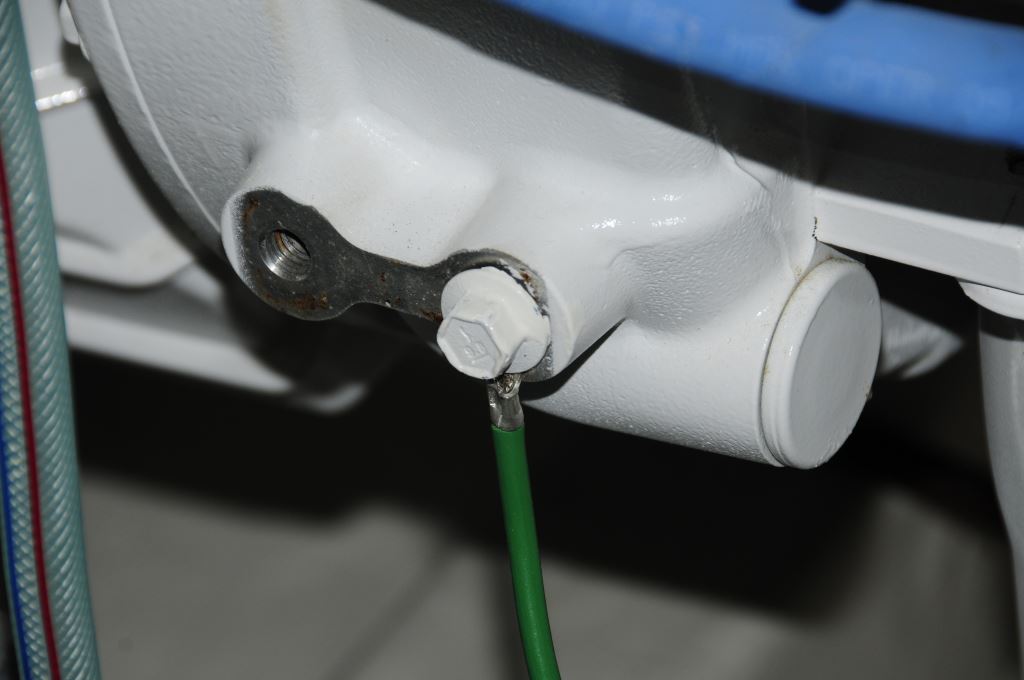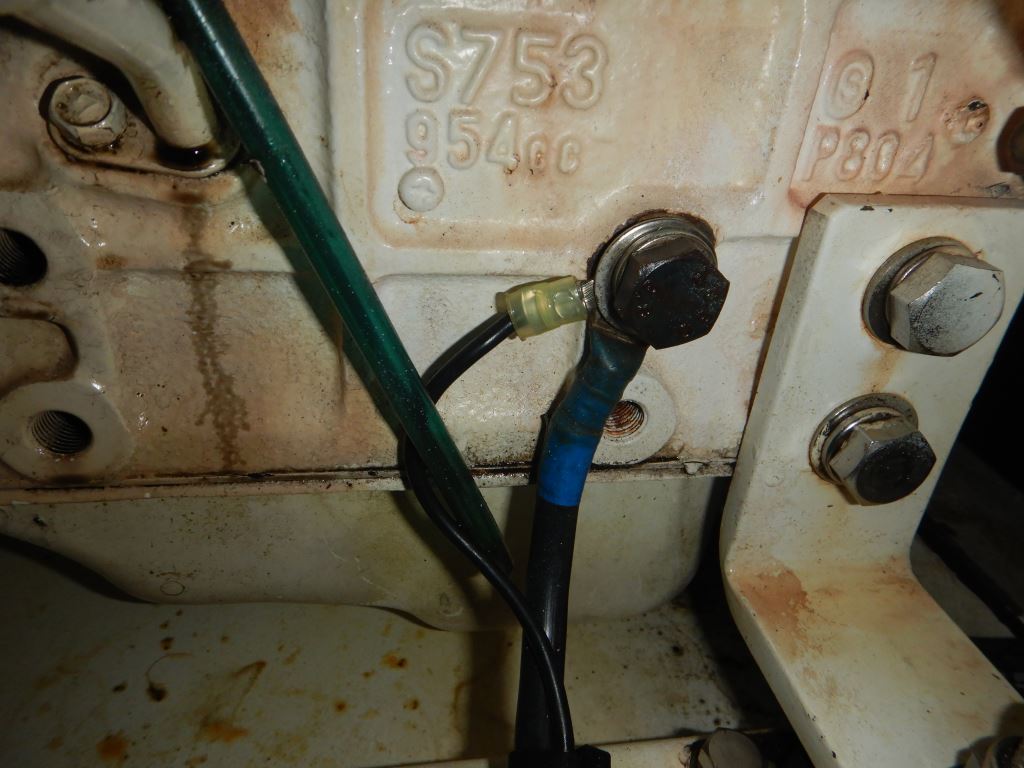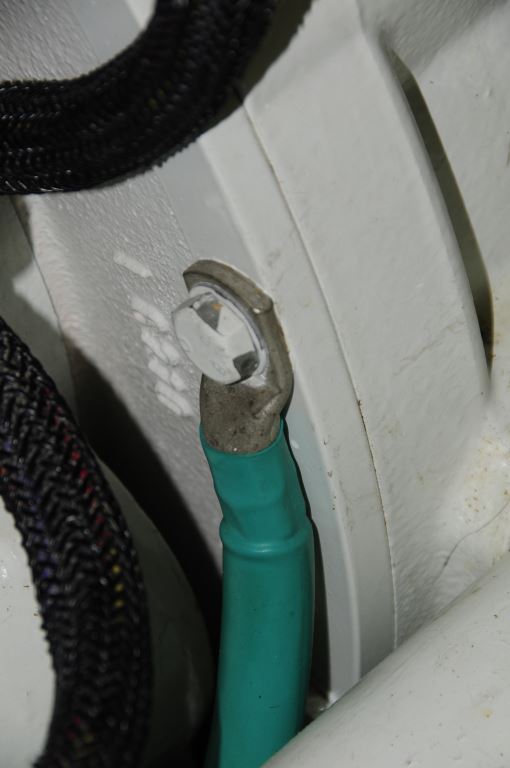From the Masthead
If you are in this industry long enough, you are bound to make a few enemies, but that’s not necessarily a bad thing. A few years ago, I was involved in a pre-purchase inspection where the engine surveyor, who hardly spent any time in the engine room – it was a very hot day – was glued to his computer and failed to notice several deficiencies (including the fact that the tandem fuel filters were set to “ALL” and the alternator on one engine was not producing any power), and the broker, conspicuously avoided shaking my hand at the end of the day. My feelings weren’t hurt, on the contrary, I wore it as a badge of honor.
If you are principled in your work, you will make enemies, it’s veritably inevitable. One of my favorite quotes on the subject comes from president and renaissance man Thomas Jefferson, “That you have enemies you must not doubt, when you reflect that you have made yourself eminent. If you meant to escape malice you should have confined yourself within the sleepy line of regular duty. When you transgressed this and enterprized deeds which will hand down your name with honour to future times, you made yourself a mark for malice and envy to shoot at.” Like so much of what he’s written, this guidance is as applicable now as it was in the 18th century.
In other words, if you stand up for what you believe in, some will perceive you as a threat and target you for retribution, or at least animus; you should not only be prepared for this, if you are acting honorably you should consider it affirmation that your actions are hitting the mark.
This month’s Marine Systems Excellence eMagazine feature covers the subject of DC grounding and bonding wiring. I hope you find it both useful and interesting.
Risks of Undersized Bonding/Grounding Wires
This DC grounding or bonding cable has been overloaded; it overheated, causing the insulation to melt. Under normal operating conditions, DC grounding and bonding conductors should not carry current, however, if they are called upon to do so, they must posses sufficient ampacity to avoid overheating.
In response to an article I had written on bonding systems, I received this letter from a colleague…
“Last year I encountered a situation where a well-known and respected boatyard had added a bonding system to a 42 (12.8m) motor yacht. They used #8 wire for the system and did a nice and tidy job of it. The bonding system included a wire to the metal housing for the bow thruster.
What the yard didn’t consider is that the bonding wire was now also acting as the DC grounding wire for the bow thruster housing (not to be confused with the DC negative cable). However, when the bow thruster motor developed a short, the #8 bonding wire tried to carry all of the full fault current. That started a small fire, which extinguished itself. Fortunately, the bow thruster was used only for a few seconds, which prevented it from burning causing a full-fledged fire. But the #8 bonding system wire couldn’t carry enough current to blow the 250-amp fuse.
Without looking up the reference in ABYC E-11, I believe that the DC grounding wire should be no smaller than one size less than the DC current carrying cables, which I recall as being 2/0 on this particular bow thruster installation.
The point of this comment is that any wire connected to the metal housing of equipment or device that has a DC electric motor (or an inverter or charger) needs to be large enough to carry the DC fault current in case of a short, so that the fuse or circuit breaker can do its job. I see this mistake quite a bit, and surprisingly get a lot of pushback from yards and techs who just don’t understand the requirement.”
Derek Rhymes, NAMS-CMS & SAMS A.M.S.
Annapolis, Maryland
My Response
Thank you for sharing this note and this story, there are clearly lessons to be learned.
At least one thruster manufacturer, Side Power (now Sleipner), prohibits interconnection of thruster drive legs to the vessel bonding system. They do this for corrosion purposes, and they maintain ABYC compliance in doing so because their electric motor is double insulated; i.e., the chassis isn’t connected to DC negative and the drive leg is isolated from the motor.
While optional, grounding deck equipment like windlasses is common. If that approach is taken, the grounding wire must be large enough to carry fault current from the windlasses’ DC positive cable. This one is undersized.
Grounding vs. Grounded
While the terms are only subtly different, there is a substantial difference between the definitions for grounding and grounded. Grounding conductors, these include DC grounding and bonding wires, do not, and should not normally carry current, they only do so in the event of a fault. Grounded conductors, like the DC negative cable used with an isolated ground starter or alternator, are intended to normally carry current.
When isolated ground starters and alternators are used, the engine block is non-current-carrying, which means it can therefore be DC grounded. The grounding cable used must be large enough to carry full fault current from the largest DC positive conductor, which is usually the one supplying the starter, which is also typically not protected by over-current protection (a fuse); it is the only conductor which is exempt from this ABYC rule, making the prospect of a short to the block even more dire.
Bonding systems, which are used to mitigate corrosion on underwater metals, are grounding, they normally carry no current other than that which is used to prevent or reduce galvanic corrosion, i.e., fractions of an amp, or in cases of stray current corrosion, multiple amps, however, that is considered a fault scenario.
The terms also apply to AC power as well. A grounded AC conductor is also known as a neutral, it is normally current-carrying. A grounding conductor used in AC systems is also known as an ‘AC safety ground’. It only carries current in the event of a fault, and when doing so ideally clears the fault by allowing a circuit breaker to trip.
ABYC guidelines are clear on this subject:
- If a DC grounding system is installed, the DC grounding conductor shall be used to connect metallic non-current-carrying parts of DC machinery and engine blocks to the engine negative terminal or its bus for the purpose of minimizing stray current corrosion and ensuring a fault current path in the event of a short circuit. [E-11.16.1 DC Grounding]
- A DC grounding conductor shall not be smaller than one size under that required for current carrying conductors supplying the device and not less than 16 AWG. [E-11.16.2 DC Grounding Conductor]
- The DC grounding conductors may be combined with the following systems providing all the requirements with respect to conductor size are met for each system. [11.16.4 Combined DC Grounding and Bonding Systems]
The highlights are mine. Based on this language, bonding wires should not be connected to current carrying parts: If the chassis of the gear, thruster or otherwise, is common with the DC negative, then it should not be bonded.
In this case, if the DC negative, and the drive leg, were isolated from the motor chassis, then one could argue the bonding wire wasn’t needed because the drive leg is protected by its own anode, and it isn’t connected to the DC negative (I’m speaking hypothetically because I don’t know the design for certain; however, I do know this is how Side Power/Sleipner sets up its systems).
Inverter chassis grounding wires frequently violate the ampacity rule for these conductors. This undersized chassis grounding wire could not carry fault current from the DC positive supply cable, should it make contact with the enclosure. This grounding lug also uses a non-ABYC compliant direct-bearing fastener.
If the short you mentioned was a short between the positive supply cable and the thruster chassis, and the chassis was non-current carrying, then the bonding wire became the return path. It would quickly be overloaded and overheat, and potentially cause a fire. Thus, one could argue that the addition of the undersized bonding wire actually caused this problem. If the chassis was not isolated, when the short occurred the DC negative cable would have carried the fault, ideally blowing the fuse.
If, on the other hand, no grounding wire was present, and the drive leg was common with the motor chassis, and it became energized with DC positive voltage, it would have led to rapid stray current corrosion, to the point where it could have compromised watertight integrity.
I all too frequently (as recently as a few days ago) encounter this insidious undersized grounding wire issue on engine and generator blocks, to which small grounding wires are often attached. I say ‘insidious’ because, much like an extension cord with a missing ground pin, everything appears to work even when this fault is present, however, it is lying in wait for the right scenario to rear its head, with potentially deadly results.
Small gauge wires used for engine block grounding are both incorrect and dangerous. If they are called upon to carry cranking, charging or fault current, they will overheat, which in turn could lead to a fire.
If the engine block is current carrying, i.e., the DC negative cable is connected to the block and the block is normally part of the circuit, If that primary DC negative cable becomes compromised, or it is somehow disconnected (I’ve seen this occur during battery replacement for instance), these small conductors can be called upon to carry cranking, charging, or fault, current, quickly causing them to become overloaded, and overheated, which can lead to a fire. Or, if the DC positive cable shorts against the block, these wires will carry at least some of the fault current, again potentially overheating.
Grounding cables connected to engine blocks must be large enough to carry starter cable fault current, this one is appropriately sized (they should be installed over unpainted surfaces).
The stray current corrosion issue aside, if a chassis is energized with 12 or 24 volts and isn’t bonded, it will remain in this state until inadvertently grounded, when the path to ground is completed with a piece of gear, such as a spare anchor or aluminum tender paddle, boat hook, fish trap etc. The results could be spectacular or even life threatening if it leads to a fire, driving home the need for thorough and proper bonding/DC grounding.
This engine block is grounded, and is therefore normally current-carrying; the starter and alternator use the block to complete the connection to DC negative. It should not have a grounding wire, and this one is undersized to boot.
It’s an interesting conundrum. Ultimately, and above all else, bonding/DC grounding wires must be able to carry fault current from the device to which they are attached; if in doubt as to whether this is necessary or not, err on the side of caution by installing a bonding wire capable of carrying this current.

